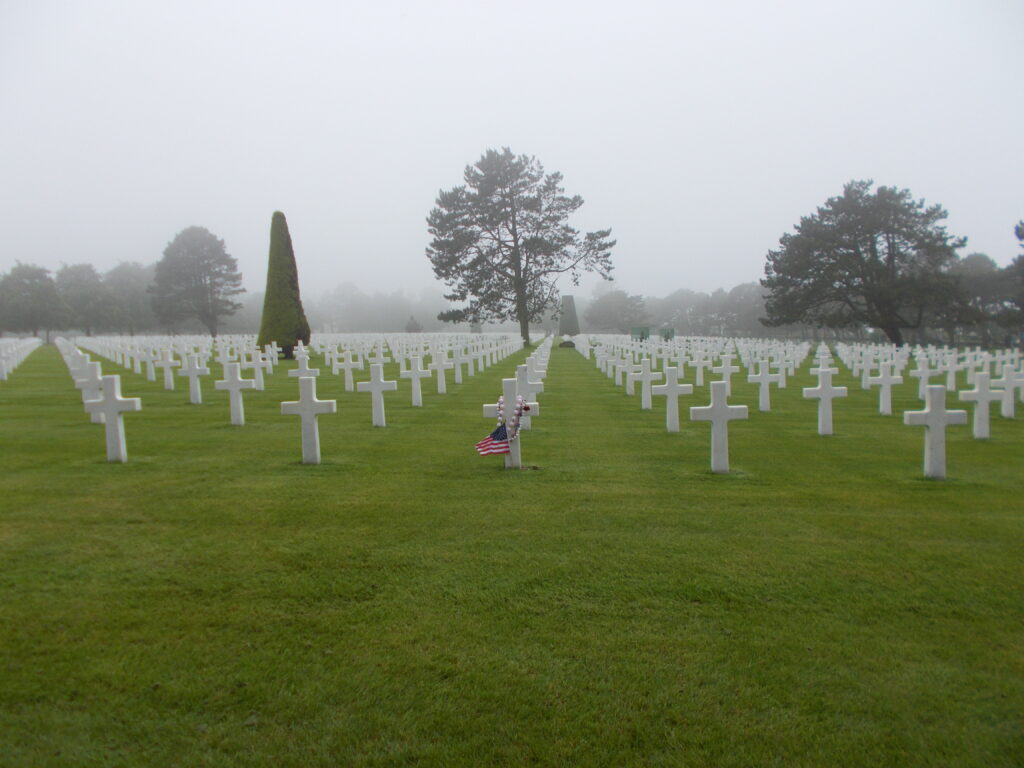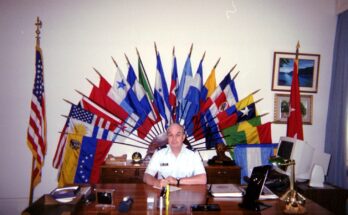
“In a graveyard in Garmisch, Germany, a headstone stands against the backdrop of the Alps. Mounted to the stone is a photo etched on a porcelain circle, an image of a farm boy hugging a cow. He was killed while serving in World War II. Can good men be found on both sides of a bad war”?
Excerpt from “A Higher Call” by Adam Makos
Those who have studied military history find it rare to identify a conflict which can truly be described as a “good war”. Perhaps the only good war is a defensive war against an invader. Most wars are otherwise. Take as an example World War I. It was a European war. At no time was the security of the United States at stake. Yet U.S. forces entered in 1917 and brought the war to an end on the 11th hour of the 11th day of the 11th month of 1918. More than 53,000 young Americans died in combat during that war and more than 63,000 more died from non-combat causes. The treaty of Versailles that officially ended that war on 28 June, 1919 was so flawed and unreasonable that it made World War II a certainty.
Sometimes a war is fought by another name. The U.N. “Police Action” referred to the Korean War. More than 36,000 of our troops died in that undeclared war. Vietnam was a “conflict” where almost 60,000 Americans died. In that conflict, it is estimated that 2 million Vietnamese civilians died along with 1.1 million North Vietnamese soldiers and 250,000 South Vietnamese soldiers. It is strange that we seldom remark on the number of enemy soldiers or civilians killed. We made an exception to reporting enemy casualties during the Vietnam War with our weekly “body count” of enemy killed. A number which was often much inflated for political reasons. After all, we had to show the public we were winning.
Powerful people declare the wars, common people fight the wars. Often those fighting do not know what they are fighting for. Example – Vietnam and the Gulf Wars. In Vietnam, decades of French colonial rule ended with the Vietnamese victory at Dien Bien Phu in July, 1954. The U.S. replaced the French with the stated purpose of preventing Southeast Asia from falling to communism, “the domino theory”. In fact, we had confused communism with nationalism.
In the first Gulf War many Americans heard that we were fighting to protect democracy or freedom. Neither was true. Kuwait was an absolute dictatorship as was its neighbor Saudi Arabia. There was never a serious threat to U.S. security. There was however, a threat to the world’s oil supply. The drumbeat of the extremists among us, “fight them over there so we don’t have to fight them over here” began to ring hollow as the real causes of the war became evident. In the second Gulf War, the public was led to believe the Iraqi regime of Saddam Hussein was an eminent threat to the U.S. It was insinuated that he was a supporter of the terrorist organization, Al Queda, and somehow linked to 9-11. In fact, the brutal dictator, Saddam Hussein, had no ties to Al Queda. He saw them as a competitor. He was routinely hunting them down. Nor were there the alleged “weapons of mass destruction” or the “yellow cake uranium”. Strangely enough, a few years earlier Saddam Hussein was considered our ally. We had supplied him with almost $5 billion in military hardware.
The U.S. defense budget for the current year is almost $1 trillion. 3.4 percent of GDP. That is more than the total defense budgets of the next nine nations combined. If you want the people to support a huge military budget, you have to show them it is necessary. Maybe with a war?
“Beware of the military industrial complex” – President Eisenhower’s Farewell Address.
“Those who fail to learn from history are doomed to repeat it” – Winston Churchill before the House of Commons, 1948.



